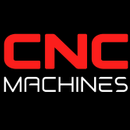What Materials Cannot Be CNC Machined? An In-Depth Guide

What Materials Cannot Be CNC Machined?
CNC (Computer Numerical Control) machining is a cornerstone of modern manufacturing, prized for its precision, repeatability, and ability to produce complex parts from a wide range of materials. From aerospace-grade titanium to everyday aluminum and plastics, CNC machines handle a broad spectrum of materials. But not all materials are suitable for CNC machining.
Why Some Materials Cannot Be CNC Machined
CNC machining involves high-speed rotary tools or lasers cutting, drilling, or milling material to a precise shape. This process demands certain physical characteristics: rigidity, heat resistance, predictable grain structure, and non-abrasiveness. Materials that lack these qualities can damage tooling, cause poor tolerances, or make machining economically unviable.
Materials That Cannot Be CNC Machined
1. Rubber and Flexible Polymers
Examples: Silicone rubber, soft polyurethane, TPE (thermoplastic elastomer)
Why Not: These materials deform under pressure and don’t cut cleanly. They stretch instead of shearing, leading to imprecise machining and poor edge quality.
Better Alternatives: Injection molding, die cutting, or waterjet cutting.
2. Carbon Fiber Composites
Why Not: Carbon fiber is abrasive and can delaminate or fray when machined. The dust it produces is also harmful and requires strict ventilation.
Better Alternatives: Laser cutting (for thin sheets), waterjet cutting (for thick sheets), or molding.
3. Ceramics and Glass
Examples: Quartz, porcelain, alumina
Why Not: These are extremely brittle and prone to cracking under mechanical force. CNC bits will often chip or shatter them.
Better Alternatives: Waterjet cutting, ultrasonic machining, or diamond grinding.
4. Tempered and Hardened Glass
Why Not: Tempered glass is designed to shatter under stress for safety. Any CNC contact can break it instantly.
Better Alternatives: Pre-shaping before tempering or laser engraving.
5. Super Soft Metals
Examples: Lead, tin, pure gold
Why Not: These metals are too soft and may gum up cutting tools, smear during machining, or deform under clamping pressure.
Better Alternatives: Casting, stamping, or manual fabrication.
6. Foams and Sponge-Like Materials
Why Not: These materials compress rather than cut, making accurate machining impossible. They may also melt or tear.
Better Alternatives: Hot wire cutting, die cutting, or laser cutting.
7. Unstable or Inconsistent Materials
Examples: Wood with large knots, recycled plastics with impurities, laminated layers with adhesives
Why Not: These materials can produce inconsistent results and damage CNC equipment. Variable density causes unpredictable cutting behavior.
What to Do If a Material Is Not Machinable?
If a material you're considering cannot be CNC machined, ask:
- Can it be replaced with a similar, machinable alternative?
- Can I use a hybrid manufacturing process (e.g., rough shape with CNC, finish with molding)?
- Is 3D printing or laser cutting more suitable for my design?
Conclusion: Know Before You Machine
While CNC machining is powerful, material compatibility is key to success. Understanding what materials cannot be CNC machined helps prevent costly mistakes, tool damage, and subpar parts. Whether you're a product designer, engineer, or CNC shop owner, material selection should always be step one.
Related Searches
- What is the best material for CNC machining?
- Can rubber be CNC machined?
- CNC vs. injection molding materials
- CNC machining limitations
Need help choosing the right material for CNC machining? Explore our CNC materials or request a quote to speak with a manufacturing expert.


